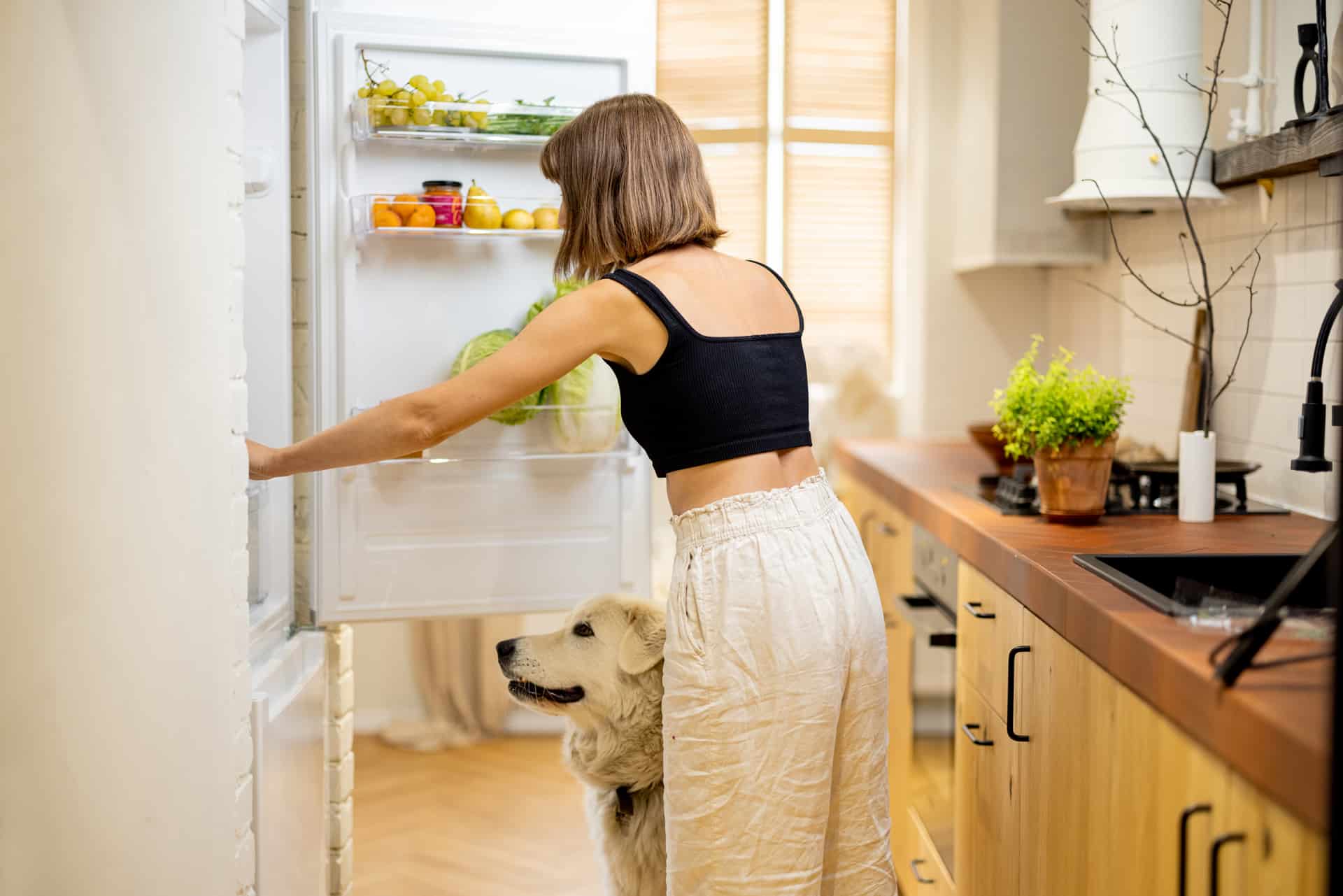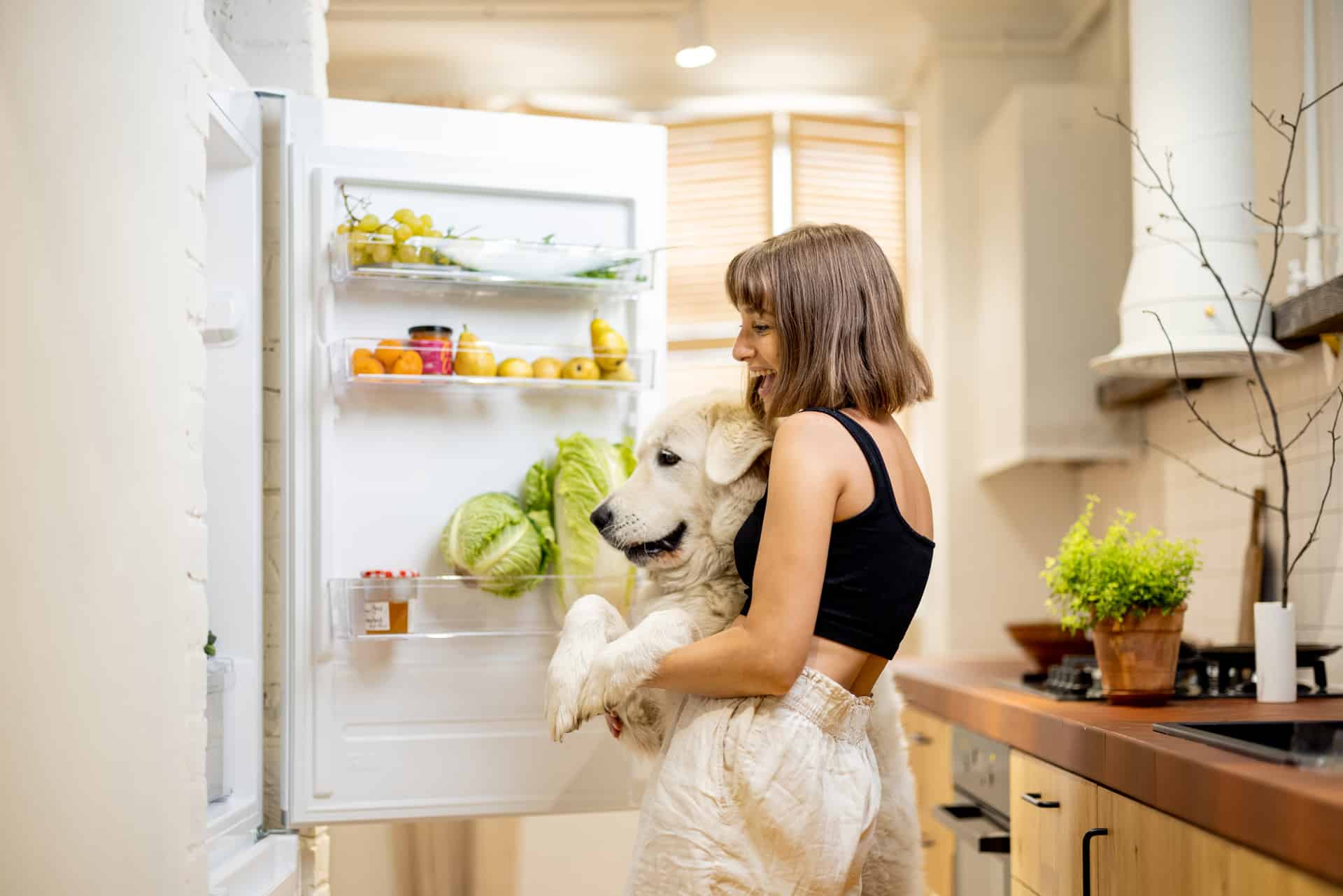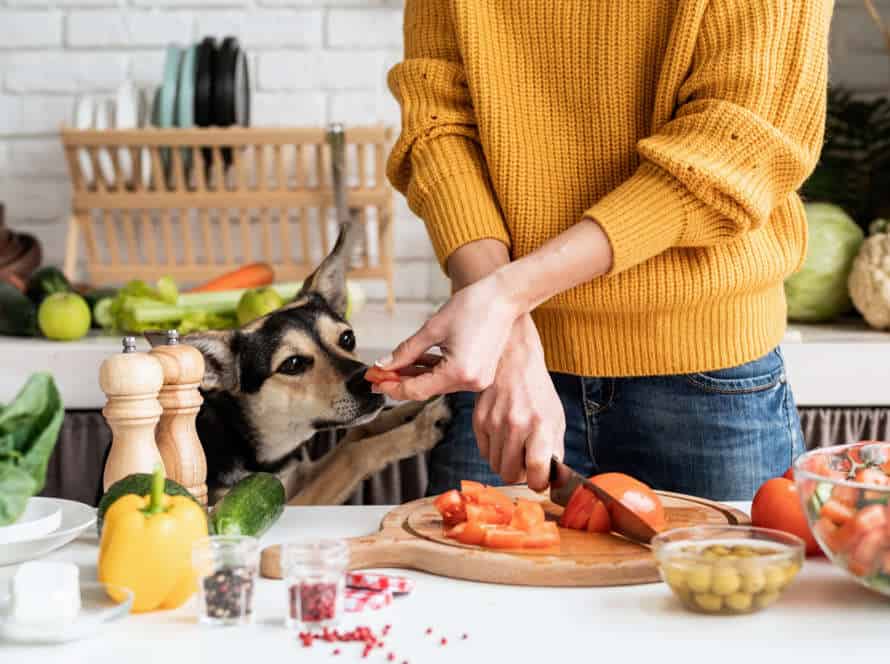Understanding the basics of homemade dog food
Make your pup’s diet special and healthy! DIY dog food is a great option. You can control the ingredients, customize recipes and know what’s in the food. Get to know the basics of homemade dog food diet and let’s begin!
Benefits of making homemade dog food
Many choose homemade dog food for various reasons. Here are some benefits:
- Control Over Ingredients: You get full power over which and how much ingredients you want to use. This can help you avoid any allergens or sensitivities from your pup.
- Nutritional Balance: Recipes can be customized for your dog’s needs, ensuring they get all the necessary nutrients.
- Improved Digestion: No additives or preservatives, so it’s easier for them to digest. This could mean fewer stomach issues and regular bowel movements.
- Better Taste: Fresh, whole ingredients make it tastier than commercial dog food.
Pro Tip: Talk with a veterinarian before switching to homemade dog food to make sure your pup’s nutritional needs are met.
Risks associated with a poorly balanced dog food diet
A poor-balanced diet for dogs can result in health risks and complications. When making homemade dog food, it’s vital to understand basic dieting to keep your pup healthy and happy. Here are some risks associated with an unbalanced diet:
- Obesity: Too much fat or calories can cause obesity in dogs, leading to further issues like arthritis and diabetes.
- Malnutrition: Unbalanced diet can cause malnutrition, leading to anemia and organ damage.
- Digestive issues: Imbalance can lead to digestive problems like diarrhea, vomiting, and constipation.
For a healthy diet, make sure the food contains protein, carbs, fat, and vitamins & minerals. Consult a vet before making changes to the diet.
Pro-tip: Homemade food can be a healthier alternative, but research carefully and prepare a balanced diet for your pup!
How to determine your dog’s nutritional needs
It’s key to know your dog’s nutrition needs when making homemade food. Here’s what to consider:
- Age: Puppies need more calories and fat than grown dogs. Senior dogs may need extra protein and fewer calories to stay slim.
- Breed: Big dogs need more protein and calories than small breeds.
- Activity level: An active dog needs more protein and calories than a lazy one.
- Health conditions: Allergies, diabetes, or kidney problems may mean different nutrients.
Once you know your dog’s nutrition needs, make a balanced diet with proteins, fats, carbs and veggies. Tip: Ask your vet if your homemade food fits your dog’s needs.
Homemade Dog Food Recipes
Create homemade dog food for a yummy and nutritious meal! Not only do these meals meet dietary needs, but they also bring many health advantages. You can customize it for your pup and save money too.
Let’s dive into some recipes for homemade dog food!
Choosing the right protein source for your dog
Choosing the right protein source for your pup is super important when making scrumptious homemade dog food! Consider these sources:
- Chicken: Lean, low-fat protein. Remove bones and skin before cooking to avoid health issues.
- Beef: Iron and zinc. Can be high in fat. Lean cuts can be pricey.
- Fish: Rich in omega-3 fatty acids. Vital to ensure boneless and cooked through to avoid health issues.
- Eggs: Great source of protein. Include amino acids, vitamins and minerals. Must be cooked thoroughly to avoid Salmonella contamination.
- Lentils: Perfect for vegetarian and vegan diets! Packed with protein, fiber, vitamins and minerals.
Adding carbohydrates and vegetables to your dog’s diet
Giving your pup carbs and veggies is a simple way to make their meal healthier and more balanced. Check out these easy homemade recipes:
- Turkey and sweet potato – Cooked ground turkey, sweet potatoes and green beans.
- Beef and rice – Cooked ground beef, brown rice, carrots and peas.
- Chicken and quinoa – Cooked chicken breast, quinoa, spinach and zucchini.
- Salmon and vegetables – Cooked salmon fillet, barley, broccoli and green peas.
Ask your vet if it’s safe and suitable for your pup before trying any new food. Also, make sure to introduce it gradually and watch for any bad reactions.
Pro Tip: Homemade food can be great for pups with dietary restrictions or allergies. But make sure they’re getting all the vitamins and nutrients they need.
Supplementing vitamins and minerals
When cooking for your pup, it’s important to add essential vitamins and minerals. Here’s what you should include:
- Protein for building and repairing muscles – chicken, beef, fish, eggs, dairy.
- Carbs for energy and blood sugar – brown rice, sweet potatoes, quinoa.
- Omega-3 for brain and eye health – fish, flaxseed, chia seeds.
- Calcium for strong bones – dairy, ground eggshells.
- Vitamin A to help vision and immunity – carrots, kale, sweet potatoes.
Check with your vet to make sure you got it all!
How to prepare homemade dog food
Homemade dog food can be yummy and nourishing for your pup! You get to choose the ingredients and customize it to their needs. Here are some important tips before you begin cooking.
- Consider picking the right ingredients
- Decide the portion sizes
- Know your pup’s dietary restrictions
Get cookin’ and provide your furry friend with a tasty meal!
Equipment needed to make homemade dog food
Make your pup’s food at home and guarantee the best nutrition with quality ingredients! Get these tools to get started:
- A big stockpot for cooking all the ingredients together.
- A cutting board and a sharp knife for chopping meat, fruits, and veggies.
- A blender or food processor for pureeing ingredients.
- Measuring cups and spoons to portion the food correctly.
- Storage containers to keep the food fresh in the fridge or freezer.
Invest in these basics and give your dog a tasty and balanced diet!
Proper storage and handling of homemade dog food
Storing & handling homemade dog food properly is super important for keeping its goodness and preventing spoilage & contamination. Here are some tips:
- Keep the food in airtight containers in the fridge or freezer.
- Put it into portion-sized containers so it’s easier to serve.
- Defrost it in the fridge overnight, or use the defrost setting on your microwave.
- Wash your hands, and any surfaces or utensils used to prepare or serve the food before and after.
- Chuck any uneaten food after 3-5 days in the fridge, or 2-3 months in the freezer.
By following these tips, you can make sure your homemade dog food stays fresh, nutritious, and safe for your pup!
Transitioning your dog to the new diet
Transitioning your pup to a new diet doesn’t have to be tricky. You can make the switch to a homemade food diet that’s both nutritious and delicious with some preparation and patience. Here are tips to help:
- Start gradually. Introduce small amounts of the new food into your dog’s meals. Increase it over time to avoid digestive upset.
- Balance the nutrients. Check that your homemade food gives a balance of proteins, carbs, healthy fats, and vitamins and minerals that meet your dog’s needs.
- Monitor health. Look out for signs of food intolerance or allergy, e.g. vomiting, diarrhea, or increased itching. Make adjustments if needed.
- Consult your vet. They can help you determine the right diet for your pup and give guidance on transitioning.
With care and attention, your dog can enjoy a healthy home-cooked diet that meets all their needs.
Frequently Asked Questions about Homemade Dog Food
Thinkin’ of makin’ homemade dog food for your pup? It can be a tough but rewarding job.
Got questions? Here’s a few of the most common ones about makin’ home-cooked nutrition for your pet. So, you can make sure your pup gets the yummy and nutritious homemade meal they need.
Is homemade dog food more expensive?
Homemade dog food can be either pricey or budget-friendly, depending on the ingredients and where you buy them. Here are things to consider:
- Premium dog food brands can cost more than making your own.
- Buying in bulk might reduce the cost of meat, veggies and grains.
- Specialty diets with hard-to-find ingredients might be costly and take time to prepare.
The expense depends on the recipe and what ingredients you get. Homemade food may cost more or less than shop-bought. It will guarantee your pup is getting nutritious meals.
Tip- Ask a vet or nutritionist for a list of low-cost ingredients to make homemade dog food.
What are some common misconceptions about homemade dog food?
Homemade dog food can be a healthy and balanced diet for your pet. Debunk these misconceptions:
- Myth 1: It’s too expensive. Some recipes can be costly, but there are budget-friendly options that have the same nutrition as store-bought.
- Myth 2: It doesn’t have enough nutrients. It can be just as nutritious, with protein, healthy fats, and vitamins and minerals.
- Myth 3: It’s too hard to make. It’s straightforward and can even be batch-cooked and frozen.
Now you can feel confident in providing your furry friend with a tasty homemade diet!
How do you ensure you are feeding a balanced diet?
Balanced diet? Essential for your pup’s health and happiness! Here’s how you can make sure your pup gets the nutrients they need from homemade food.
Protein source (meat or fish) should make up at least half of their diet.
Add variety of veggies – sweet potatoes, squash, leafy greens for vitamins and minerals.
Healthy fats (coconut oil or olive oil) for energy and a shiny coat.
Calcium source (eggshells, bone meal, or supplements) for strong bones and teeth.
Consult vet or veterinary nutritionist for the right amount of nutrients for pup’s breed, age and weight.
Regularly monitor pup’s health and adjust diet accordingly.
Pro tip: Research ingredients used and avoid toxic foods such as chocolate, onions, and grapes that can be harmful to your pup’s health.
Conclusion
To wrap it up, cooking nourishing and yummy homemade dog food is a great way to help your pup. With fresh, good quality ingredients and sticking to a balanced diet plan, you can make sure your pooch is getting what they need. Plus, making your own food lets you dodge additives, preservatives and other chemicals in store-bought food.
Talk to your vet to guarantee that you are meeting your pup’s special nutritional needs. Your furry pal will thank you with their wagging tail and good health.
Pro tip: When you find a recipe your pup likes, try making big batches and freezing them for easy meals.
Frequently Asked Questions
1. Why should I make homemade dog food instead of buying commercial dog food?
Homemade dog food allows you to control the quality of ingredients and ensures your dog is getting fresh, nutritious food. It also eliminates the risk of harmful additives and preservatives found in some commercial dog foods.
2. Is homemade dog food more expensive than commercial dog food?
The cost of homemade dog food can vary depending on the ingredients used, but it can be cost-effective in the long run. Shop seasonal vegetables, meats on sale, and buy in bulk to save money. Homemade dog food also results in a healthier, happier pet which has the potential to reduce vet bills down the lines.
3. What ingredients are essential in homemade dog food?
A well-balanced homemade dog food should include high-quality protein sources, whole grains, fresh vegetables, fruits and healthy oils. Avoid feeding dogs human food or toxic food for dogs such as chocolate, garlic, onions or grapes & raisins.
4. How much homemade dog food should I feed my dog?
It is very important to serve a balanced diet to your furry friend. Your dog’s size, age, activity level and other health factors needs to be considered tailor their diet. Consult with a vet for their opinion based on your dog’s specific needs as an individual.
5. Can homemade dog food be frozen for later use?
Yes, homemade dog food can be stored in an airtight container in the freezer for future use. When preparing meals for your dog, defrost only the portion required for one feeding required to minimize waste.
6. How often should I change up the recipe of homemade dog food?
Changing your dog’s recipe too often may disrupt their digestion system. Introduce new foods gradually and make small changes to avoid digestive issues. Consult with your vet if you have concerns about your dog’s diet.







